Post by Charlie Dickson on Jul 17, 2007 15:45:48 GMT -5
First tied by Lee Wulff in 1951, this fly has proved to be an extremely affective fly for Atlantic Salmon. It has gone through some changes since that time. Wulff’s original flies were made from molded plastic, a process he had patented. Not to be daunted by such silly things as a patent, inventive fly tiers devised other methods of creating this fly for there fishing. The one listed below is one of the more popular methods of making this fly, but by no means the only.
Hook: Low water single or double.
Tag: flat silver tinsel
Body: bright green floss
Wing: black bear tied flat across the body
Post: Bent strait pin
Hackle: Silver badger
Tying this fly is not difficult, however, there are some things you need to pay attention to make it come out good. The first item is the post for the parachute hackle. This is most commonly made from a strait pin with a yellow bead head although there are other methods. With a pair of needle nose pliers bend the pin at a 90 degree angle about an 8th of an inch from the bead head of the pin. Then use a pair of dikes to cut off about half the remainder of the pin. Use a stone or file to grind down the sharp edges on the end of the pin so they do not cut your thread when you tie it to the hook.
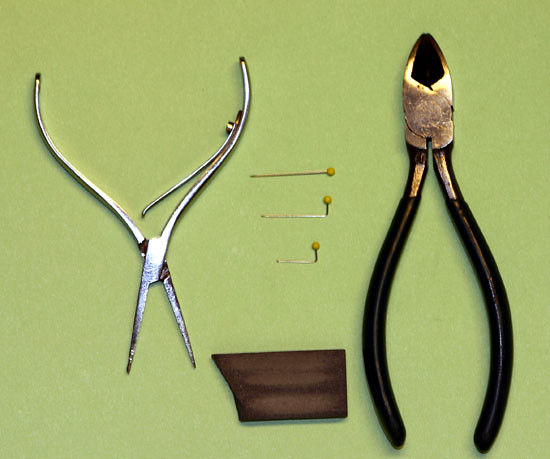
Put a hook in the vise, start the thread, (since the body will be bright green I am using white thread to keep the color from bleeding through) and tie in the silver tag.
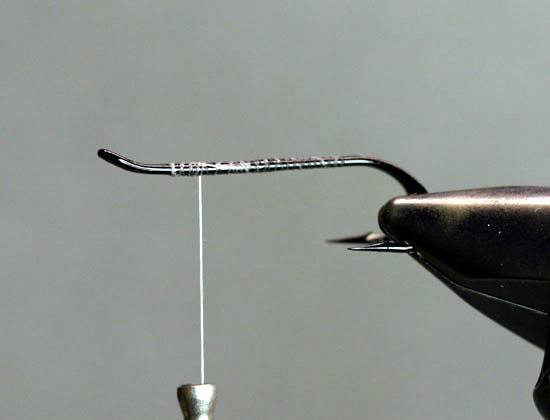
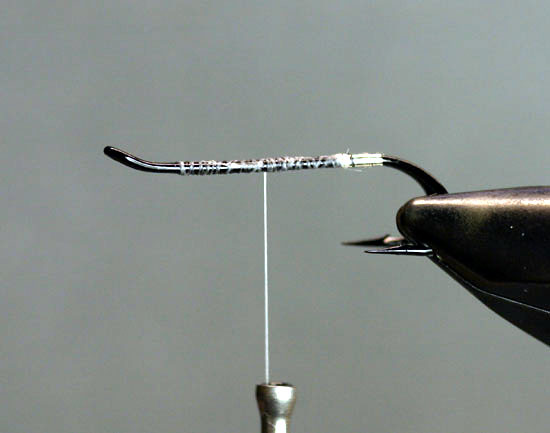
Tie the pre-bent pin on top of the hook shank about an 8th of an inch back from the eye of the hook.
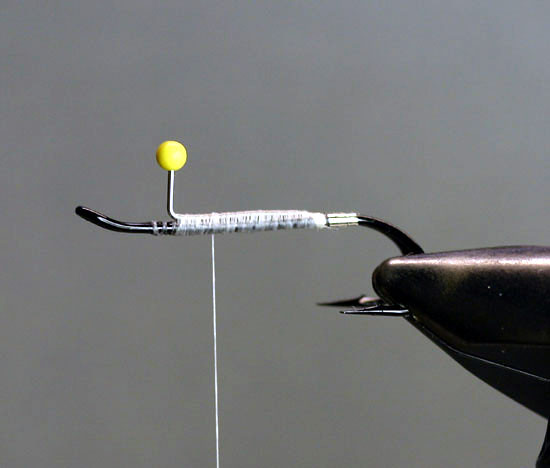
Tie in some green floss and wrap the body of the fly with it up to the pin. Leave some excess floss hanging for later use.
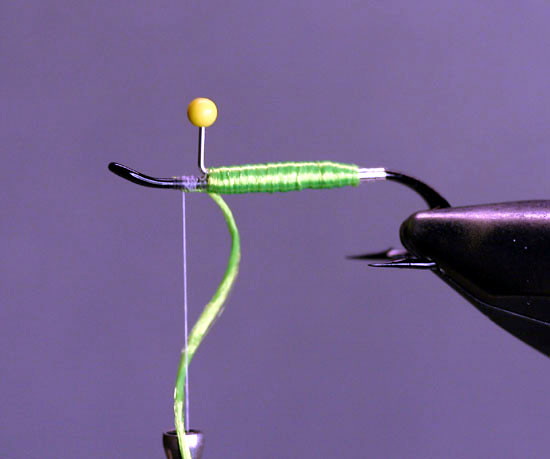
Tie in some black bear hair on top of the hook as shown. And clip off the excess.
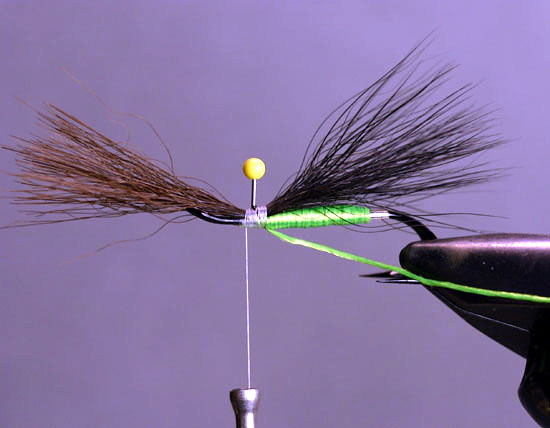
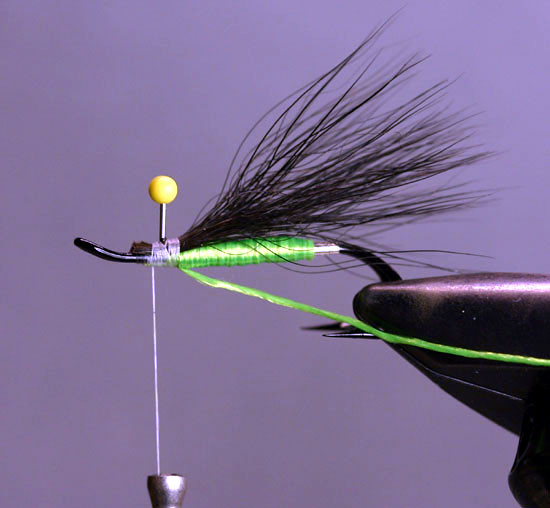
Wrap some floss over the tie in point of the bear hair behind the pin.

Tie in a few silver badger hackles.
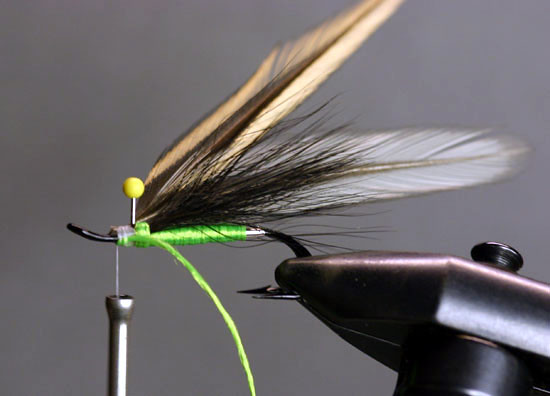
Wrap some floss over the tie in point of the bear hair in front of the pin.
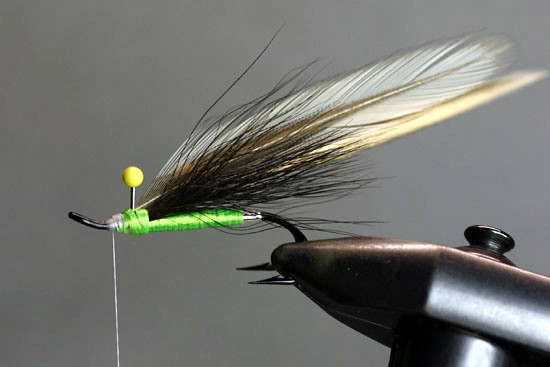
Wrap the hackles around the Pin and tie them off. Another good tip to use when tying parachute hackles is to make each wrap of the hackle under the proceeding one. You will find that they look much neater than if you wrapped them randomly up and down the post.
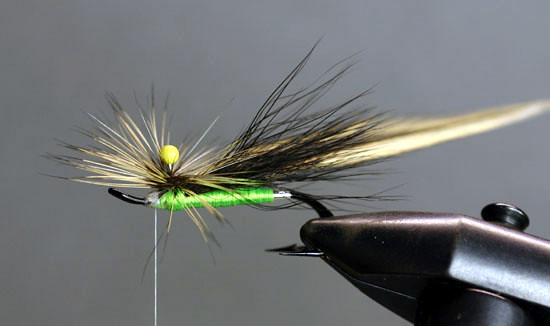
Finish the head and you are done with the fly.
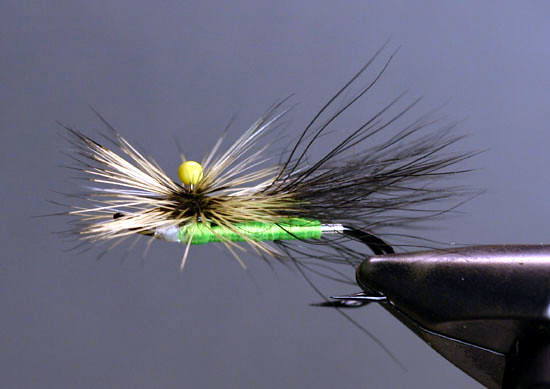
Hook: Low water single or double.
Tag: flat silver tinsel
Body: bright green floss
Wing: black bear tied flat across the body
Post: Bent strait pin
Hackle: Silver badger
Tying this fly is not difficult, however, there are some things you need to pay attention to make it come out good. The first item is the post for the parachute hackle. This is most commonly made from a strait pin with a yellow bead head although there are other methods. With a pair of needle nose pliers bend the pin at a 90 degree angle about an 8th of an inch from the bead head of the pin. Then use a pair of dikes to cut off about half the remainder of the pin. Use a stone or file to grind down the sharp edges on the end of the pin so they do not cut your thread when you tie it to the hook.

Put a hook in the vise, start the thread, (since the body will be bright green I am using white thread to keep the color from bleeding through) and tie in the silver tag.


Tie the pre-bent pin on top of the hook shank about an 8th of an inch back from the eye of the hook.

Tie in some green floss and wrap the body of the fly with it up to the pin. Leave some excess floss hanging for later use.

Tie in some black bear hair on top of the hook as shown. And clip off the excess.


Wrap some floss over the tie in point of the bear hair behind the pin.

Tie in a few silver badger hackles.

Wrap some floss over the tie in point of the bear hair in front of the pin.

Wrap the hackles around the Pin and tie them off. Another good tip to use when tying parachute hackles is to make each wrap of the hackle under the proceeding one. You will find that they look much neater than if you wrapped them randomly up and down the post.

Finish the head and you are done with the fly.

